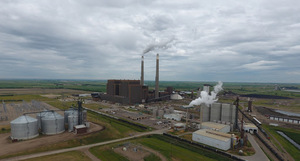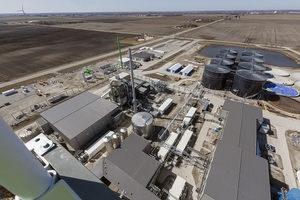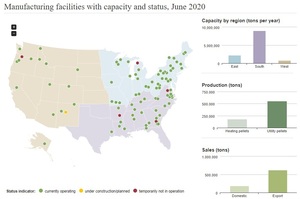Blue Flint granted $155,000 to consider biomass conversion
Energy Disrupter
ADVERTISEMENT
The North Dakota Agricultural Products Utilization Commission has awarded Blue Flint $155,000 to research and conduct a feasibility study on the utilization of biomass as a fuel and power source for its 70 MMgy ethanol plant located near Underwood, North Dakota.
Blue Flint Ethanol currently sources water and steam from Great River Energy’s Coal Creek Station, a 1,100 megawatt (MW) coal-fired power plant. Great River Energy on May 7 announced plans to retire the Coal Creek Station during the second half of 2022 as part of an initiative to replace coal with low-cost renewables and market energy purchases. Great River Energy, however, also said it is willing to consider opportunities to sell the plant.
In its May 7 announcement, Great River Energy said it plans to negotiate an agreement to terminate its steam and water supply contract with Blue Flint and noted the plant’s owner, Midwest AgEnergy, is considering using the contract termination payment from Great River Energy to reinvest in an economical alternative source for its process heat, thereby benefiting area farmers by continuing to support the local market for corn.
Midwest AgEnergy released a statement on May 8 announcing it is evaluating alternative thermal energy and utility options to ensure the long-term viability of the Blue Flint ethanol plant. As part of that effort, the company said it is assessing the most viable alternative source for water and process heat while preserving the low carbon fuel designation the facility has developed. Midwest AgEnergy also confirmed it is evaluating options for using the contract termination payment from Great River Energy to reinvest in economical alternative sources of power and water at the Blue Flint facility.
The $155,000 awarded to Blue Flint by the North Dakota Agricultural Products Utilization Commission will help further those efforts.
Jeff Zueger, CEO of Midwest AgEnergy, said the study will focus on wheat straw and corn stover. “We will have final results of the study in about one month,” he said. “As the study advances, we will learn more each week about our initial assumptions and either validate the case for advancing with biomass as a part of the feedstock for Blue Flint or move another direction,” he added.
According to Zueger, the company has also evaluated several other fuel types, including natural gas liquids, wood pellets, natural gas in several configurations, and bioreactors. “In any configuration, we anticipate we will enable natural gas as a primary or backup fuel source,” he said.
The use of biomass as a primary fuel, however, would benefit the plant in terms of the carbon intensity (CI) of the fuel it produces. “When compared to a repower with natural gas, we anticipate biomass will lower our CI in any low carbon fuel market,” Zueger said. “We are currently in a combined-heat-and-power configuration with Coal Creek Station, so we gain advantage for using energy that the power plant could not utilize.”
With the Coal Creek Station currently scheduled to be retired in just over two years, a decision on repowering the Blue Flint plant must be made soon. Zueger said Midwest AgEnergy expects to have all the information need for our board to make a repower decision in October 2020. “We will need to begin the repower and utility projects at that time in order to be ready for the 2022 shutdown of Coal Creek,” he said, noting that it will take approximately two years to covert the facility over from its current design.
There is also the possibility that the Coal Creek Station will be sold and continue operations. “If Coal Creek were to be sold and continue operations such that it could continue to supply our thermal and utility needs, we would suspend or not advance the repower, as it would no longer be necessary,” Zueger said. “We are optimistic about the future of Blue Flint and the important role it plays in central North Dakotas energy and agriculture economies.”
















